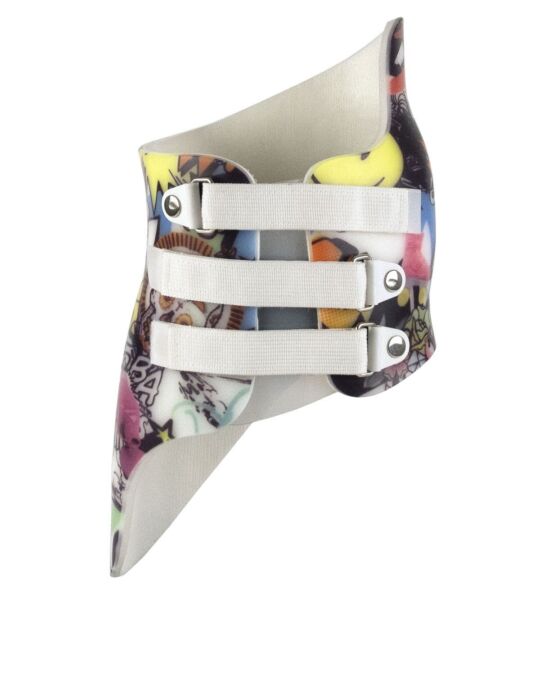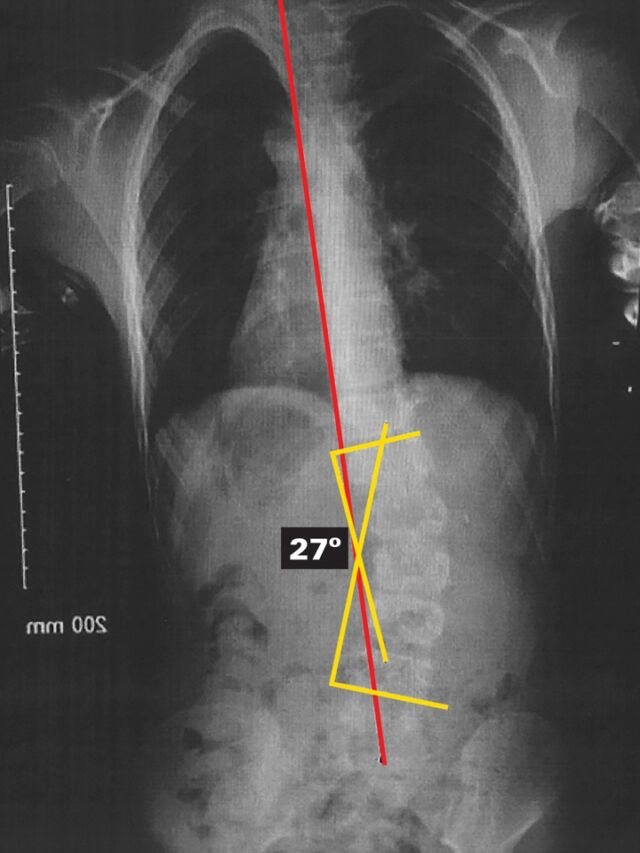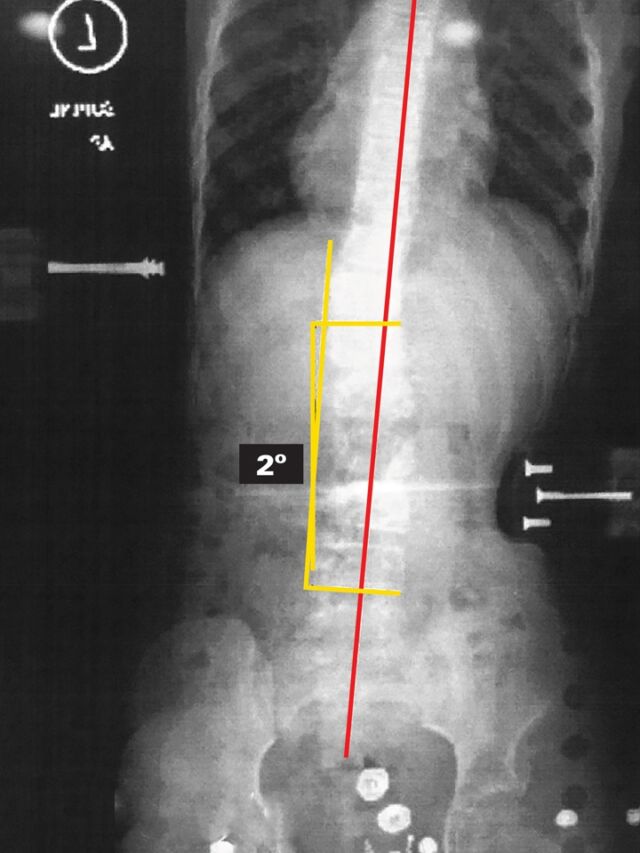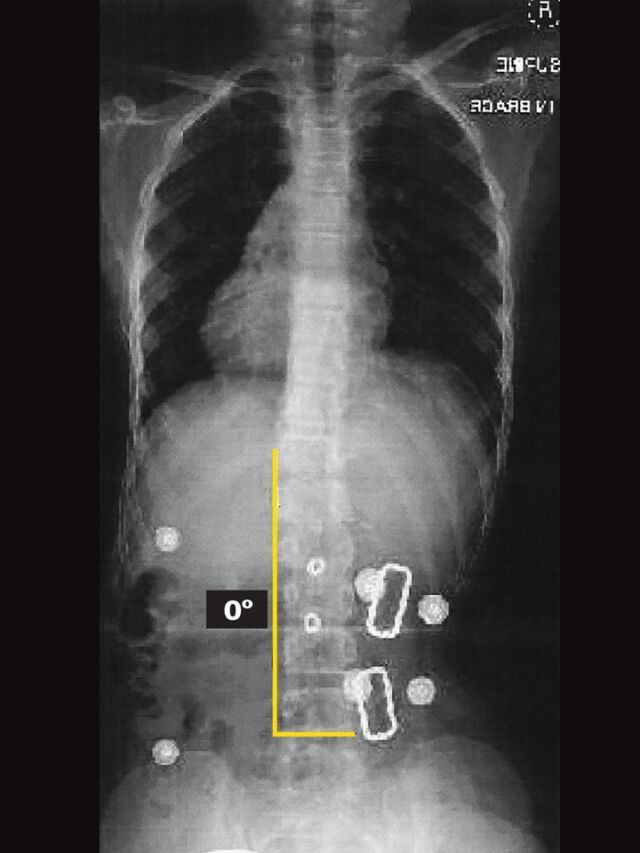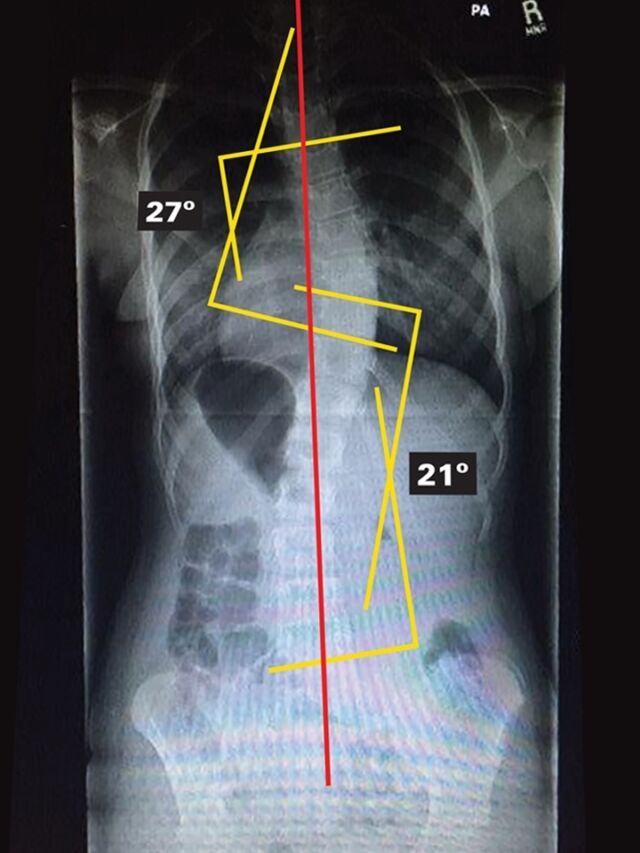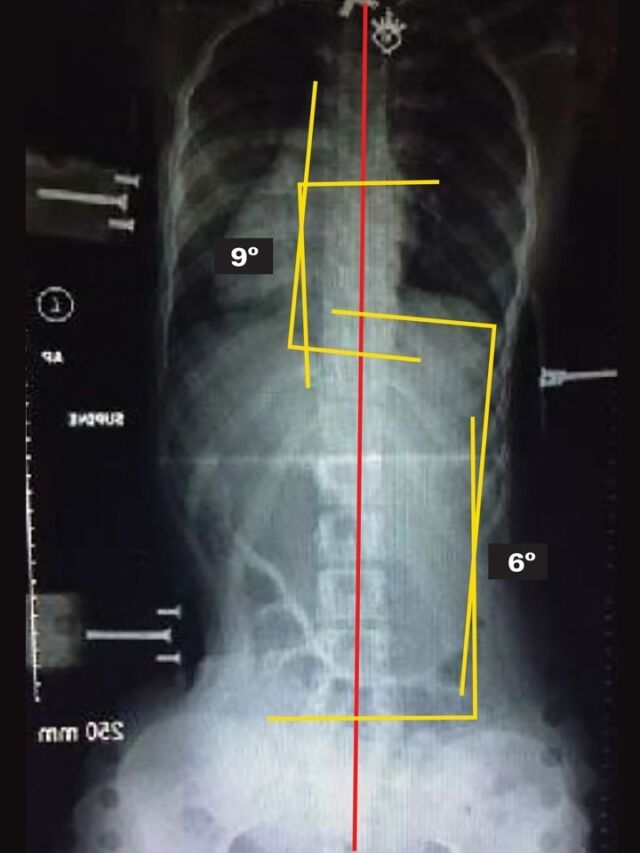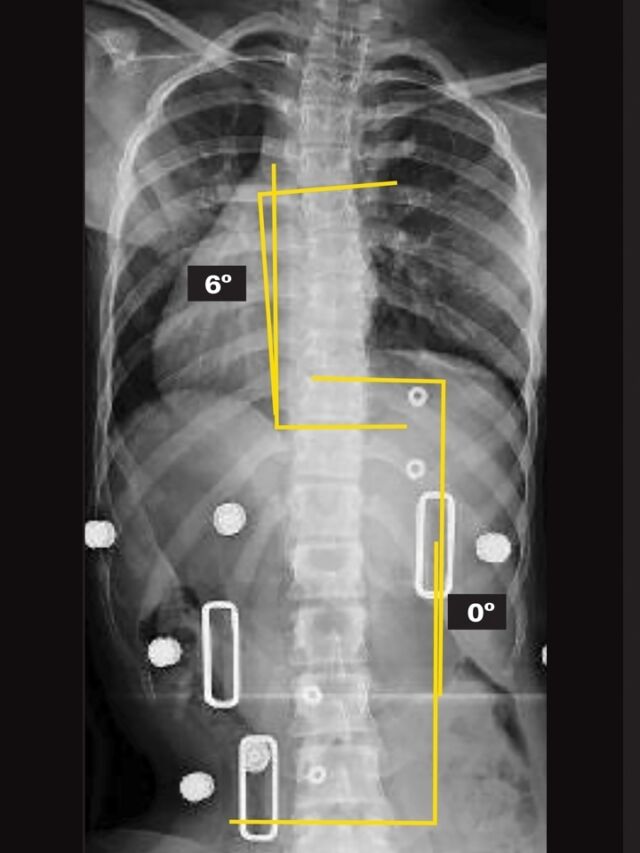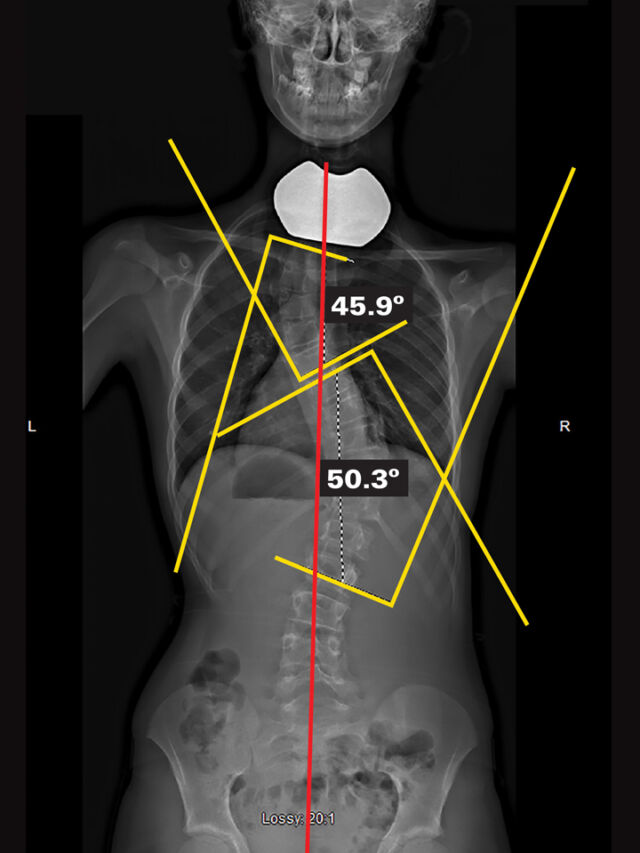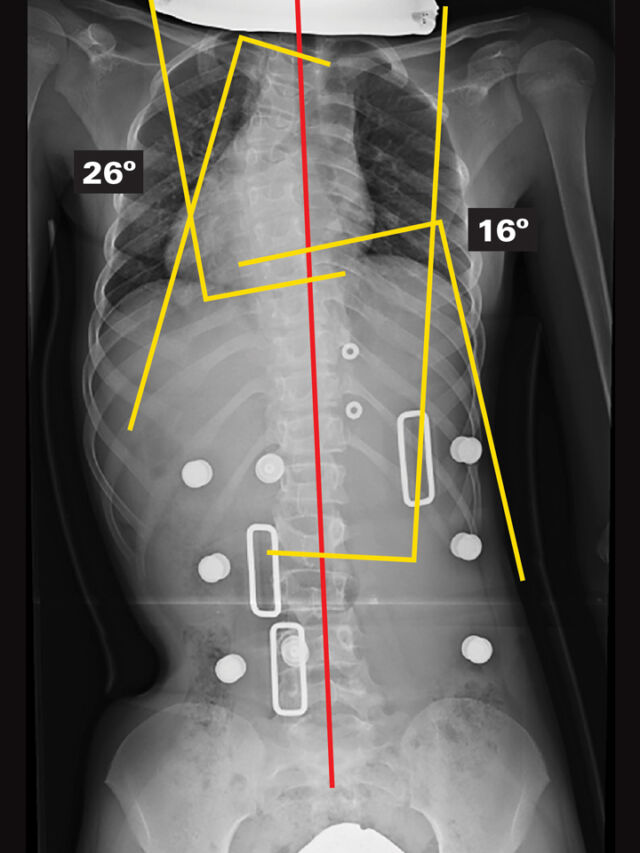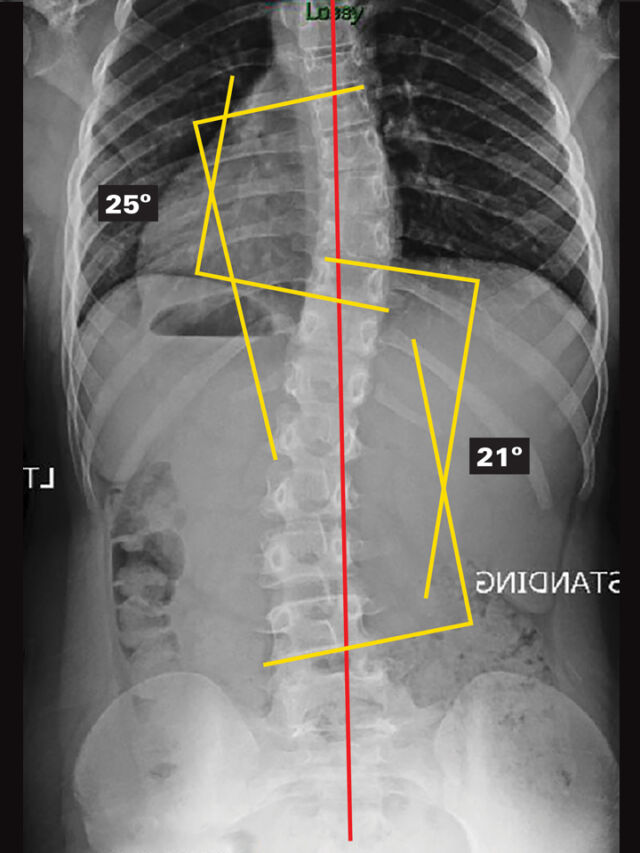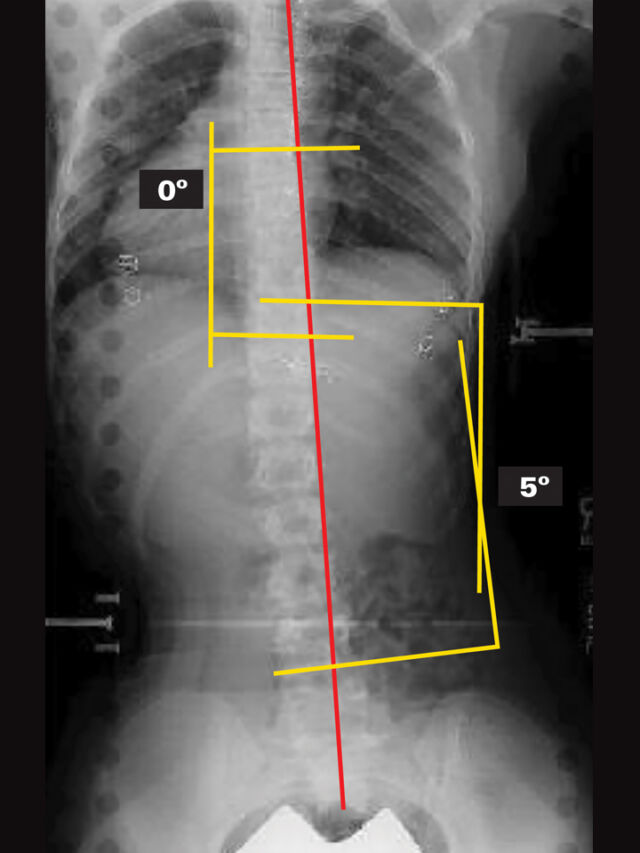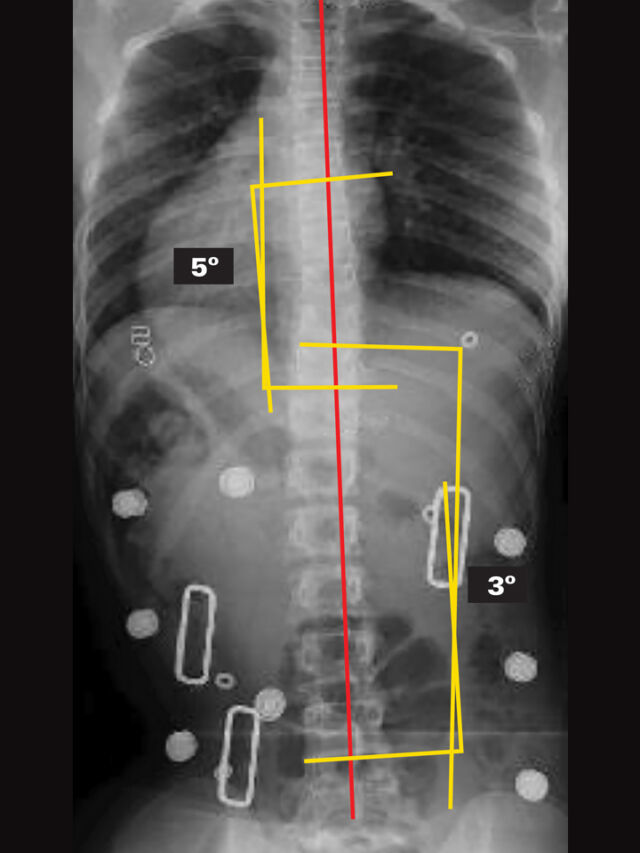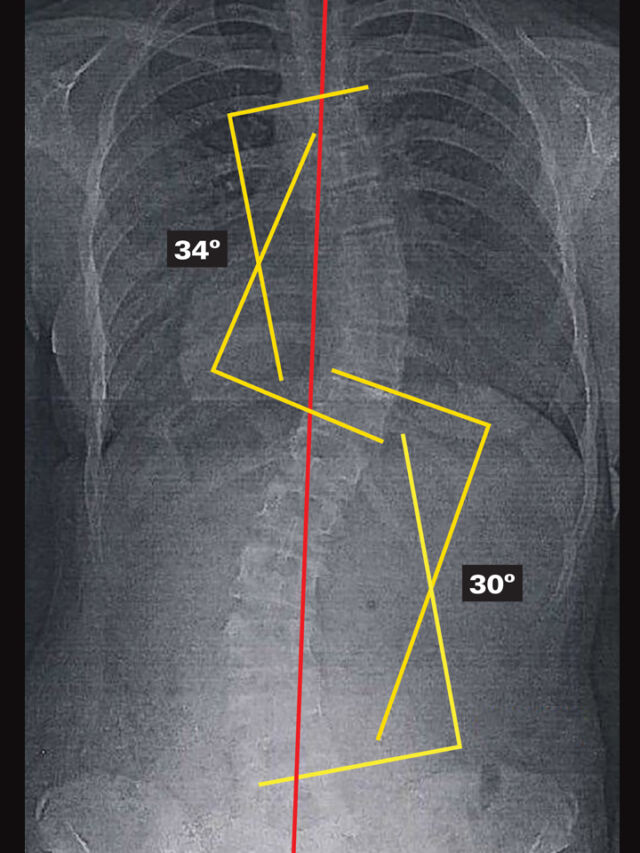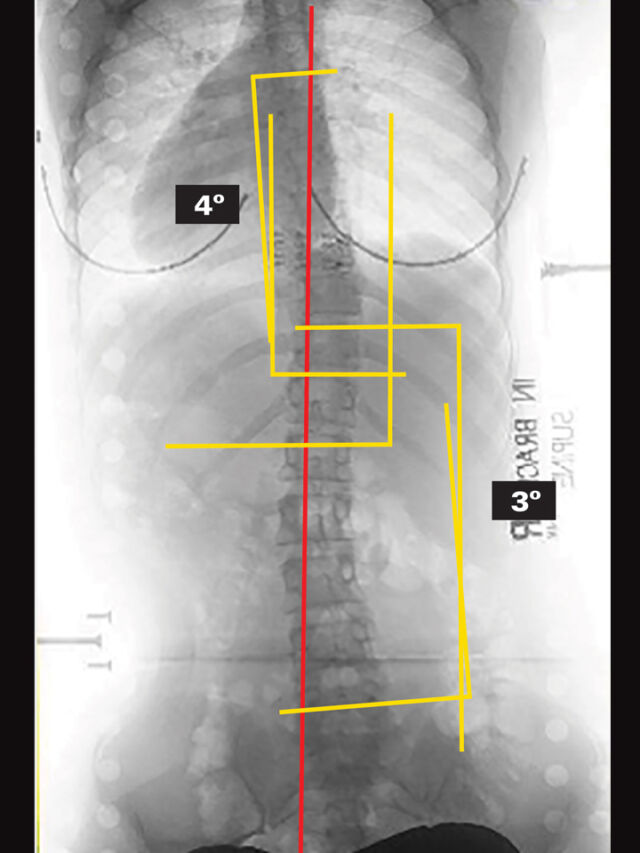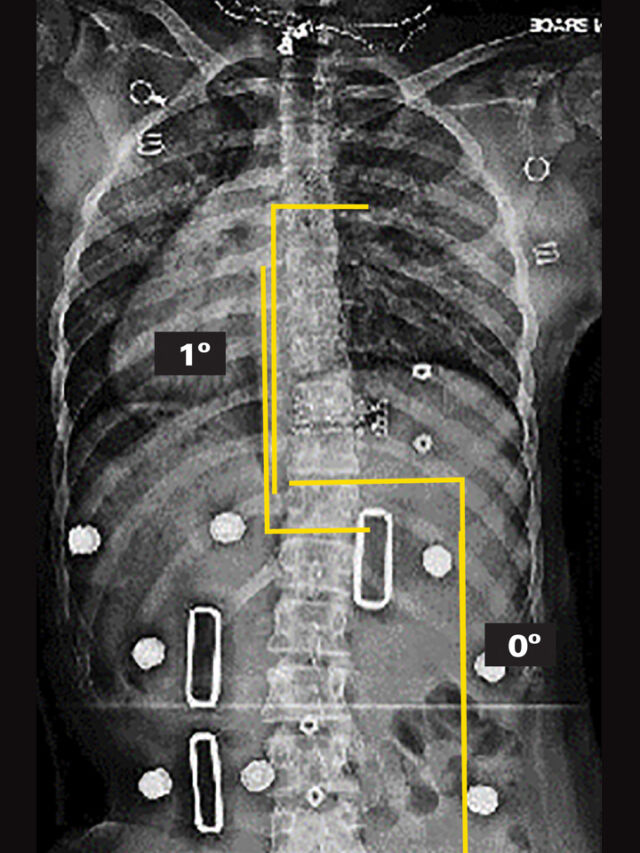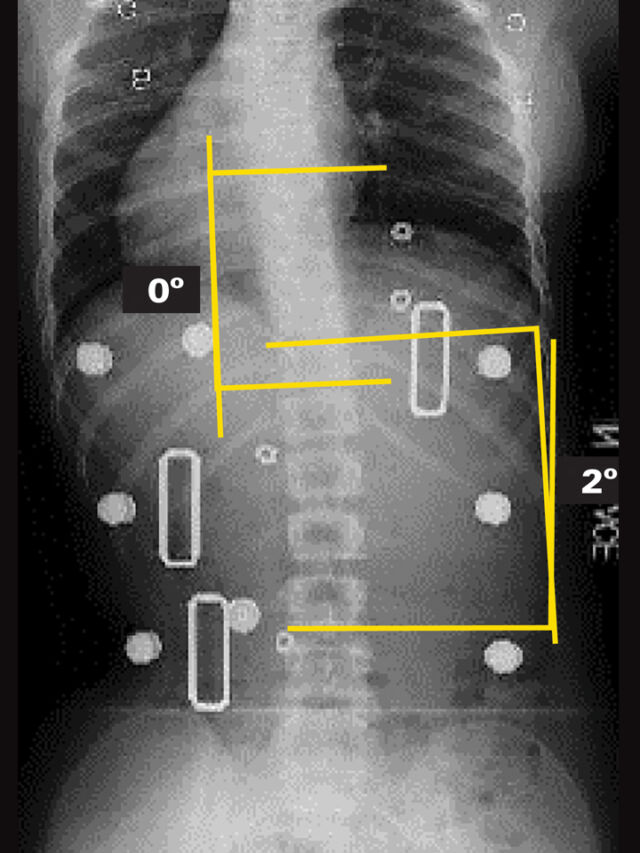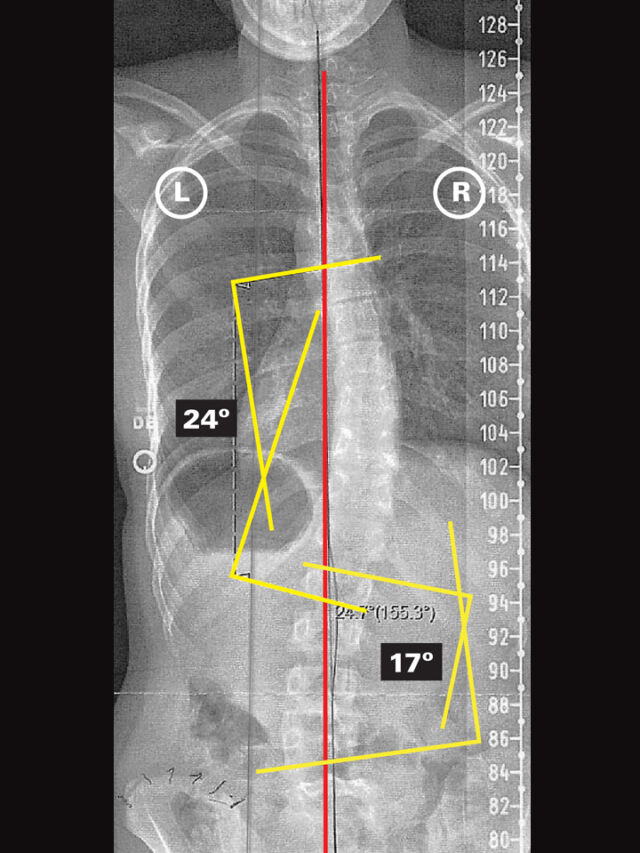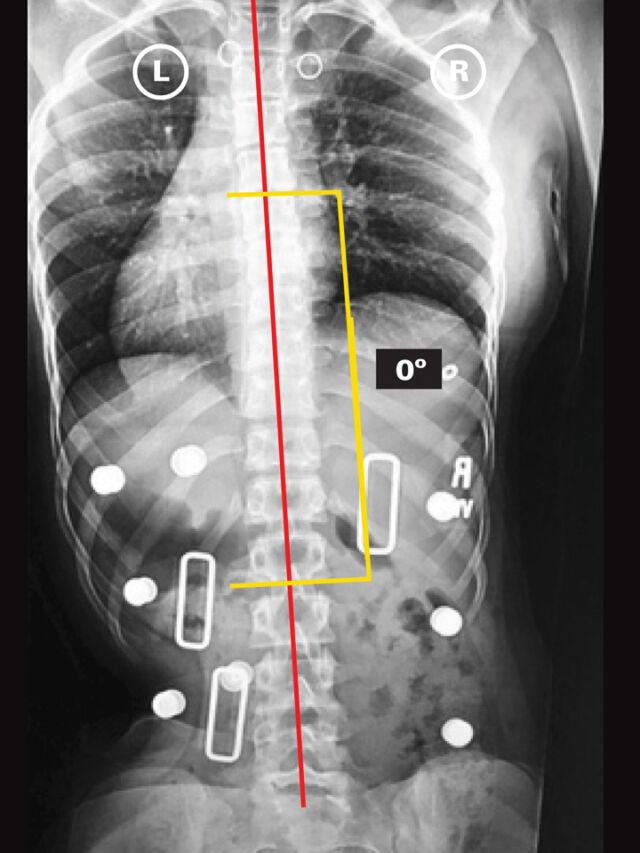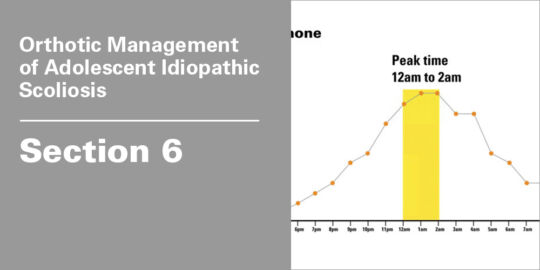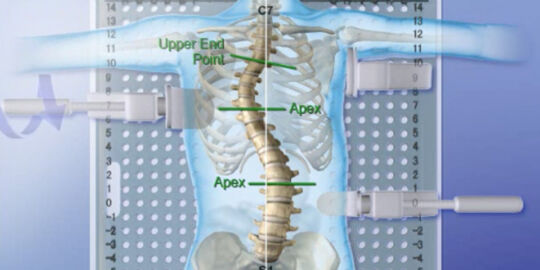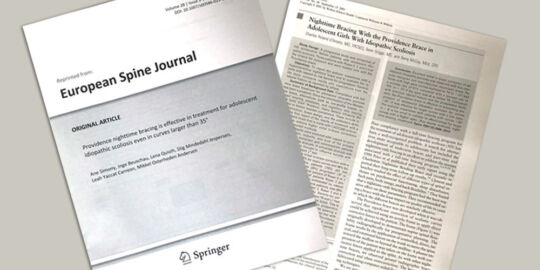Advantages of the Providence Nocturnal Scoliosis® System
The Providence® brace is a scoliosis orthosis that is worn while in a recumbent position. The Providence Nocturnal Scoliosis® system’s objective is to move the scoliosis curves to midline or beyond the midline through the application of controlled, direct, lateral and de-rotational forces to the spine. The Providence Nocturnal Scoliosis® System achieves this result in 7 key ways.
1. The recumbent position allows for greater correction of the scoliotic spine.
- When recumbent, the spine elongates and the ribs align vertically. This creates a wider space between the floating ribs and the iliac crest, providing greater access to the lumbar spine to apply effective lateral and de-rotational forces.
- When thoracic ribs are aligned vertically, thoracic pads may be applied more precisely. Locating the correct apices to apply the appropriate push towards midline and appropriate de-rotational forces is vital to successful correction.
- The recumbent position significantly reduces compressive gravitational forces which helps access, control and correct higher thoracic curves. In contrast, full-time braces are limited in the amount of correction and the type of curves that each can successfully correct.
- The initial in brace x-ray for the Providence® orthosis is 98% correction. Collectively the in brace x-ray of fulltime bracing is 56%. There is a 42% differential in initial in brace x-ray results of the Providence® versus full-time braces.
2. The Providence® orthosis utilizes overlapping 3-point pressure systems with opposing void and segmental de-rotation at selected points.
Every brace is designed with a corrective pad(s) and 2 stabilizing pads. Single curves use a single 3 point system while thoracic and double curves will utilize an overlapping 3 point pressure system. Thoracic curves with rotation evident will be derotated 25 degrees in relation to the pelvis. There is no bending of the patient in the Providence® brace.
3. The Providence Nocturnal Scoliosis® System is a nighttime system.
Optimal correction occurs during critical growth hours. There is elevated output of HGH at night.
Related Links
Questions concerning The Providence Nocturnal Scoliosis® System?
Contact our Customer Service Team at 800 253 7868. We'll be glad to help you with your question.
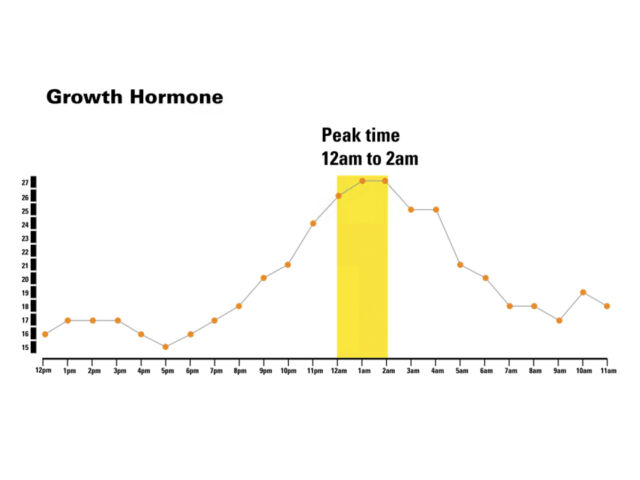
4. Research shows there is a strong correlation between best or initial in brace correction and follow up correction.
| Product | Researchers | Correction |
|---|---|---|
| Milwaukee | Carr et al. | 55-60% |
| Boston | Emans et al. | 50% |
| Wilmington | Basset et al. | 50% |
| Miami | McCollough et al. | 50% |
| Charleston | Price et al. | 73% |
| Providence | d'Amato et al. | 98% |
5. The Providence Nocturnal Scoliosis® System utilizes a measuring board to provide a more precise and convenient measuring system.
- The orthotist will place stabilizing and corrective pads to the patient on the board according to his/ her X-ray blueprint. The stabilizing pads will maintain patient on center line while the pressure pads shift the curve(s) towards centerline or beyond. The practitioner can manually palpate the patient’s spinous process to determine how much correction the pads are creating, as well as how much the patient can tolerate. In some cases, the orthotist/practitioner has the flexibility to have x-rays taken while patient is on the board to ensure that the pad placements are correct and positioned to achieve maximum correction. There is no other scoliosis bracing system that provides these immediate results.
- The patient’s measurements and coordinates from the board are recorded and uploaded to Spinal Technology using proprietary CAD/ CAM software for design and fabrication of the Providence® orthosis. Pad placements are precisely carved to deliver the proper corrective pressures and take into account the de-rotational forces and the void areas to the positive image/ mold of each patient.
- The Providence Nocturnal Scoliosis® System measuring board eliminates, for the patient and clinician, the time, expense and nuisance associated with casting a patient for a negative plaster mold of their torso.
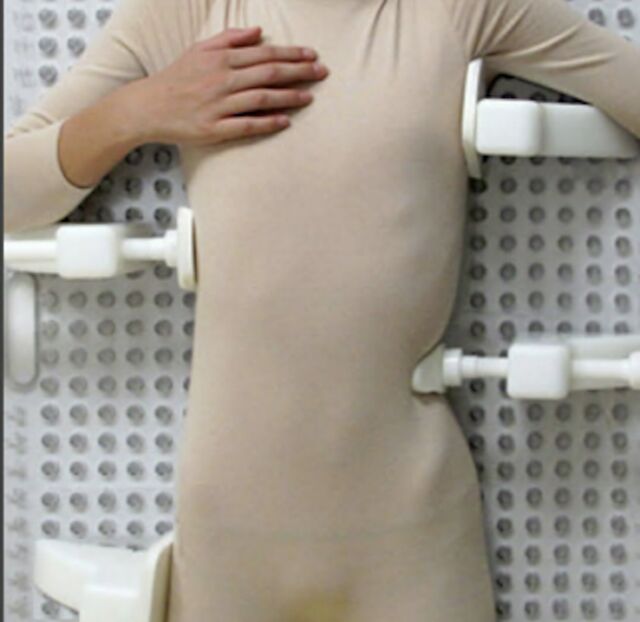
Providence Nocturnal Scoliosis® System Board
The orthotist will place stabilizing and corrective pads to the patient on the board according to his/ her X-ray blueprint. The stabilizing pads will maintain patient on center line while the pressure pads shift the curve(s) towards centerline or beyond.
This animation shows the process of spinal correction with the Providence Nocturnal Scoliosis® System. The example shown is a double major (Thoracic and Lumbar) curve.
6. The Providence® brace is not a full contact orthosis.
- Depending on the curve type, only 30%-40% of the orthosis comes in direct contact with the patient. The Providence® brace is strategically designed to maximize correction and ultimate comfort to promote high compliance rates for the patient. Void areas are evident on the Providence® brace with consideration of the patient’s breathing expansion.
- Unlike full-time braces that need to be replaced due to the growth of the patient, the efficiency of the Providence® orthosis increases as the patient grows. Full-time braces lose their ability to make sufficient contact on the appropriate apices as the patient matures. The opening of a full-time orthosis will expand and minimize vital pressure to the curves needed for correction. The Providence® brace will actually increase the amount of needed pressure to the curve. As the patient’s hips expand in width, the lumbar pad pressure increases because the iliac/ilium isn’t covered in the Providence® orthosis. This limits the number of new braces the patient would need to skeletal maturity.
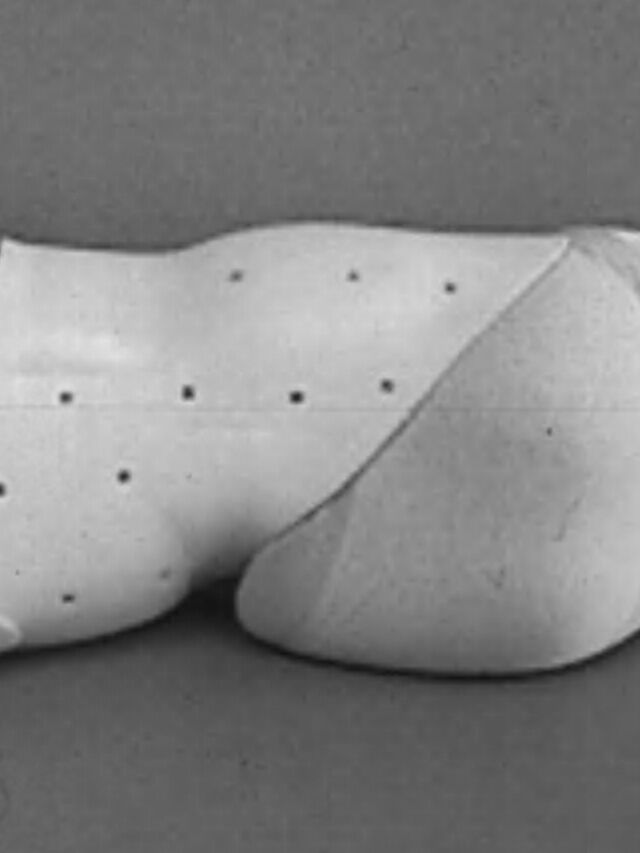
Example of a Good Fitting Lumbar Pad
As the patient’s hips expand in width, the lumbar pad pressure increases.
7. Compliance is critical to success in scoliosis bracing.
- Wearing the Providence® orthosis eliminates the social stigma of having to wear a full-time, full coverage brace to school. In addition to the physical discomfort of wearing a full-time brace, many adolescents describe it as an isolating and uncomfortable experience which may negatively impact compliance rates.
- The patient wears the Providence® orthosis while sleeping, and for best results, should wear the Providence® brace while doing homework or watching TV in the supine position. For most patients this means 10 to 12 hours of wearing time; for juveniles it can be up to 16 hours as opposed to the 23 hours per day required for full-time bracing.
- In order for full-time braces to reach and hold high thoracic apices of curves, the brace has to be designed in a manner that one shoulder is elevated inches above the opposing shoulder, limiting mobility, making everyday functions challenging and drawing attention to the wearer.
The answer is clear.
In considering the Providence Nocturnal Scoliosis® System over full-time bracing, remember that with the Providence Nocturnal Scoliosis® System it’s possible to apply optimal pressures and shift towards midline while maximizing de-rotation of the thoracic spine to correct rotation of the curve. Application of these forces in a full-time brace to achieve these results is, in many cases, simply too difficult for the patient to tolerate. Attaining a successful result by de-rotating the patient’s thoracic spine 25% and expecting the patient to be able to walk, run or sit comfortably when the thoracic is aggressively rotated in relation to the pelvis, is unlikely. This type of scoliosis treatment can only be accomplished with comfort and tolerance of the patient in the recumbent state – with the Providence® orthosis.
Spinal Technology is the exclusive manufacturer of the Providence Nocturnal Scoliosis® Orthosis.
3 questions to ask before recommending a scoliosis orthosis:
- Is it likely that your patient will follow the recommended treatment?
- Does the orthosis have the potential to deliver the highest degree of correction?
- Can it minimize or eliminate social anxiety?
The Providence Nocturnal Scoliosis® System is designed and fabricated to help you answer each of these questions with a confident “Yes”
See The Results
These X-Ray results of the Providence® orthosis correction on scoliosis curves show the efficacy of this innovative product.
